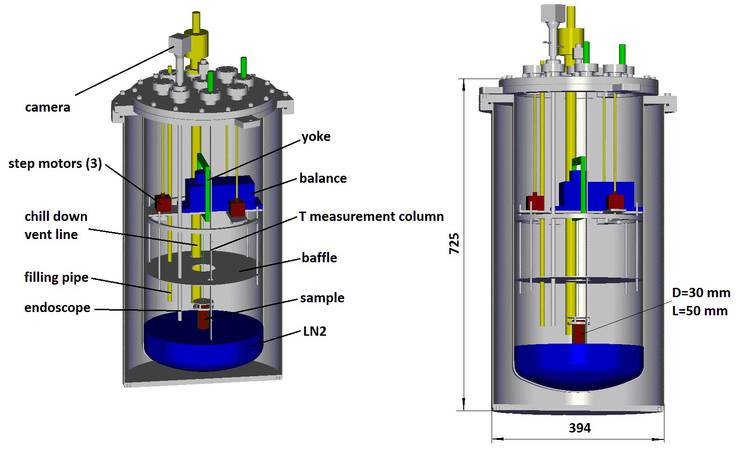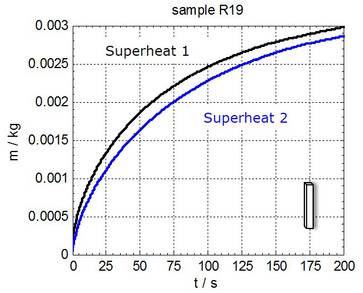Capillary rise in porous media
Motivation
Fluid management in spacecrafts with ballistic phases relies on porous media which cause capillary forces. These capillary forces can be used to transport liquid, to block gas from entering the liquid phase, or to block liquid from entering the gaseous phase. Cryogenic applications are subjected to thermal gradients which may cause heat transfer and evaporation. In some cases, evaporation in porous elements of liquid-vapor separation devices is an undesired effect for vapor-free cryogenic propellant delivery to spacecraft engines. On that account, the capillary transport of a cryogenic liquid subjected to evaporation needs to be understood and assessed. We investigate wicking of liquid nitrogen at saturation temperature into superheated porous media.
Facility
A novel test facility was built to perform wicking experiments in a one-species system under pre-defined non-isothermal conditions. The setup configuration enables to define the sample superheat by its initial position in a stratified nitrogen vapor environment inside a cryostat. Simultaneous sample weight and temperature measurements indicate the wicking front velocity during the imbibition. The mass of the imbibed liquid nitrogen is determined varying the sample superheat, geometry and porous structure.

Experiment
To perform wicking experiments, the porous sample was driven down and partially dipped into the liquid. The vertical imbibition take place into the unsaturated part of the porous sample. During the imbibition, the liquid nitrogen rises up into the porous structure until it reaches a certain height. After the complete saturation of the sample (due to the dimensions of the sample), the sample was driven out of the liquid. This experiment was performed with two different initial temperatures of the porous sample, where superheat 1 refers to the higher initial temperature and superheat 2 refers to the smaller initial temperature. The mass of the imbibed liquid nitrogen was determined varying the sample superheat, geometry and porous structure.


Simulation
Further work will focus on the numerical simulation of the wicking process on the macroscopic and microscopic (pore) scale under non-isothermal conditions. Therefore, the macroscopic parameters such as the porosity, the permeability and the static radius can be determined by simulations on the pore scale. For this purpose, a 3D-model of a real sample has to be created using computer tomography and stored in digital form as an STL file, which can be loaded into a simulation program. With the knowledge of the macroscopic parameters, the penetration behavior can be simulated in the entire sample.
PUBLICATION
Grebenyuk, Y., Dreyer, M. E.: Wicking of liquid nitrogen into superheated porous structures, Cryogenics 78 27-39 2016


 "
"